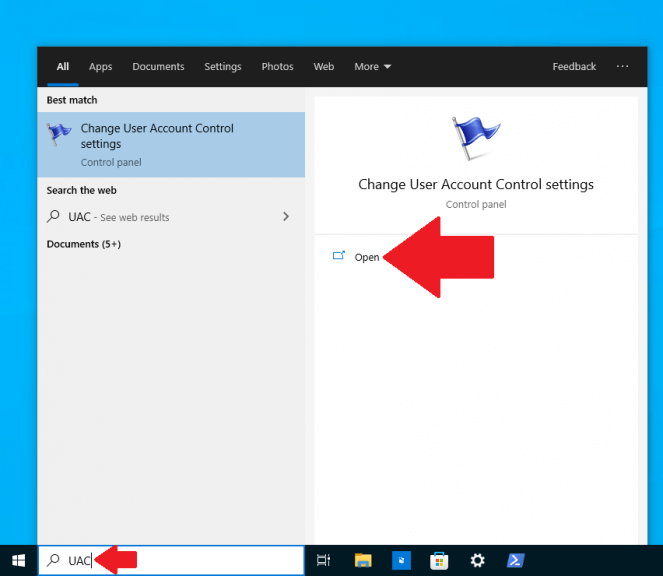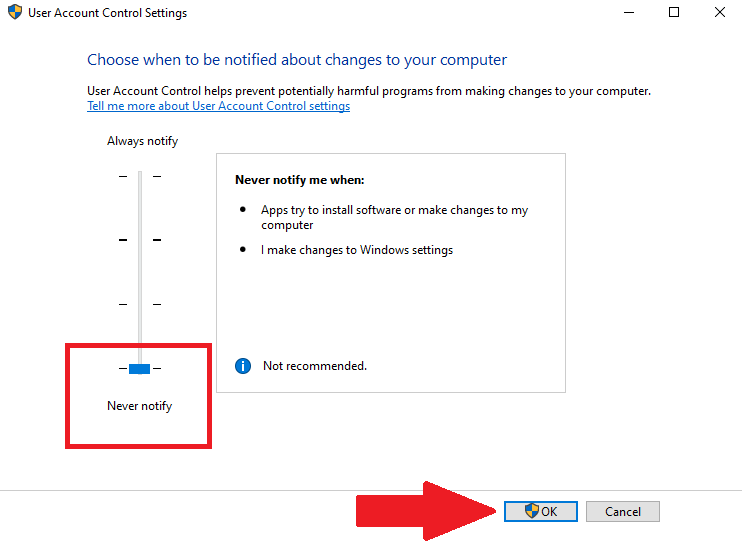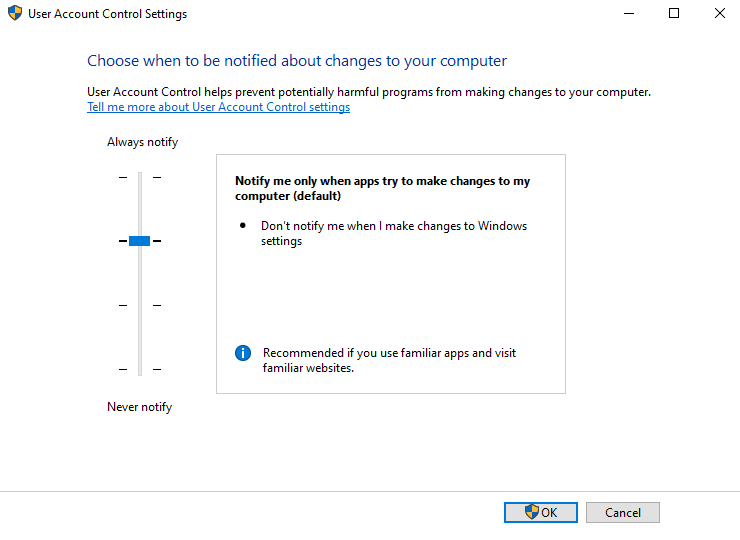1. Open User Account Control Settings 2. Move the slider to one of the four options available 3. Click OK to confirm your changes
Ever wonder how to disable User Account Control (UAC) on Windows 10? UAC is an important security feature. UAC mitigates the threat of malware and other related damage to your PC by requesting system access for applications running on your system. By default, a running application must request via a UAC prompt to “Run as Administrator” to make changes to your system. If you regularly work with applications that regularly interrupt you to request administrator access, you lose valuable time.
With UAC enabled, apps and tasks always run in the security context of a non-administrator account and require an administrator to authorize administrator-level access.
With UAC disabled, you can change it so you are no longer distracted by annoying UAC prompts, but apps are now free to make changes to your system without permission.
Disable User Account Control (UAC) on Windows 10
Here’s what to do to change UAC on Windows 10:
1. Click the Start icon or Search in the lower right of your desktop and type “UAC”
2. Under Change User Account Control settings, click Open as shown

3. In the User Account Control Settings window, click and drag the slider to the bottom position, Never notify.

4. Click OK to confirm your changes. You have to agree to one final UAC prompt to confirm the changes.
By using this setting, applications will be able to request Run as Administrator access to your system and will immediately be granted that access without a UAC prompt.
User Account Control (UAC) Settings
The UAC Settings has four levels of security available
- Always notify me when: This option will notify you when programs try to install software or make changes to your PC, or when you make changes to Windows settings. This option is the strictest, freezes all other tasks until you respond, and is only recommended if you regularly install new software or visit unsecured websites.
- Notify me only when programs try to make changes to my computer: This is the default Windows setting and notifies you only when programs try and make changes to your PC. This option is recommended if you want to be notified when new programs try to make changes to your PC but don’t want to be notified when you make changes to Windows settings.
- Notify me only when programs try to make changes to my computer (do not dim my desktop): This option notifies you when programs try to install software or make changes to your PC but does not freeze other tasks or wait for a response. This option is recommended if it takes a long time to dim your desktop. This option is not recommended and is only used for Windows 10 running on older hardware.
- Never notify (Disable UAC): This option is not recommended at all. It does not notify you with a UAC prompt of any changes you make to Windows settings or if programs install software or make changes to your PC.
Re-enable UAC
If you ever decide that you want to re-enable UAC in the future, re-open the User Account Control Settings window, drag the slider back to the default setting and click OK to confirm your changes. The changes will take effect immediately, so you won’t have to reboot or confirm another UAC prompt.

It is recommended that you don’t change the UAC settings on your PC unless you have a good reason. Personally, my reason is that I don’t want to be bombarded by UAC prompts every time I install a new program, but you may want to choose one of the intermediate steps instead of completely turning off UAC.
Remember: User Account Control (UAC) on Windows 10 is an important security feature that puts you in control over what applications can do to your PC, even while it can be annoying at times, so know the risks.